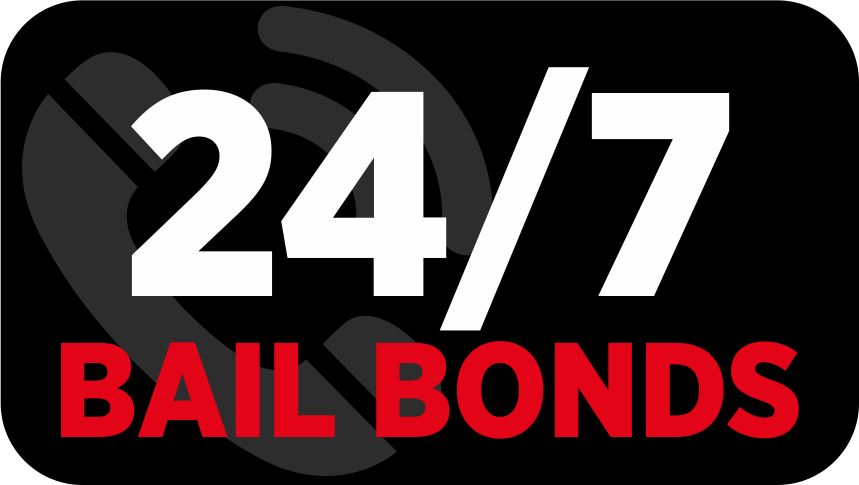Bail Bonds Near Me Canton Ohio: Relied On Local Bail Bond Agents
Bail Bonds Near Me Canton Ohio: Relied On Local Bail Bond Agents
Blog Article
Comprehending Just How a Bail Bond Works and Its Impact on the Legal Process
The concept of a bail bond acts as a crucial mechanism within the lawful procedure, enabling accuseds a pathway to safeguard their launch while awaiting trial. By recognizing the intricacies of this procedure, consisting of the functions of bail bondsmen and the economic ramifications, one can appreciate how accessibility to bail substantially influences legal end results. Variations in bail price raising pressing inquiries regarding systemic inequalities and their broader social effect. What consequences emerge when the capability to pay determines one's flexibility? Exploring these measurements unveils an intricate interplay deserving of more evaluation.
What Is a Bail Bond?
A bail bond is a legally binding agreement that acts as an economic guarantee for the release of a charged person from jail while they await test. This device allows accuseds to safeguard their temporary flexibility by offering a monetary guarantee to the court that they will certainly stand for all arranged hearings - bail bonds canton ohio. The bond quantity is usually set by a judge based on aspects such as the severity of the offense, the accused's criminal background, and the threat of flight
bail bonds can be posted by the defendant or with a Bail bondsman, that bills a non-refundable cost, generally a percentage of the total bail amount, in exchange for presuming the monetary danger. If the accused stops working to show up in court, the bail bond ends up being surrendered, and the court might provide a warrant for the person's apprehension. In such situations, the bondsman is commonly entrusted with situating and capturing the accused to alleviate their economic loss.
Essentially, bail bonds offer a vital function in the judicial system by stabilizing the assumption of innocence with the demand to ensure court appearances, thus assisting in the offender's right to plan for their situation outside of incarceration.

The bail Refine Explained
Navigating the bail process can typically really feel frustrating for those not familiar with the legal system. The bail procedure normally starts after an individual is jailed and booked. At this moment, a judge will identify the bail amount, which is intended to make certain the offender's look at future court days. Factors affecting this decision include the nature of the alleged crime, the offender's criminal background, and their ties to the area.
Once the bail amount is set, the accused or their rep can choose to pay the total in money, organize for a bail bond, or demand a Bail hearing for a potential decrease. If a bail bond is selected, a licensed bail bondsman generally charges a non-refundable charge, generally around 10% of the complete bail amount, in exchange for ensuring the court that the defendant will show up for all needed procedures.
Upon payment, the bondsman will certainly publish the bail with the court, protecting the defendant's release. It is vital for the accused to follow all court days; stopping working to do so can lead to the forfeit of the bail and added lawful consequences.
Kinds of bail Bonds
bail bonds come in numerous kinds, each made to satisfy different needs and circumstances within the legal structure. The most common type is the surety bond, where a Bail bondsman supplies the full bail quantity for a fee, usually 10-15% of the overall bail. This Get More Information plan allows defendants to secure their release without needing to pay the whole bail upfront.
An additional kind is the money bond, which needs the accused or a 3rd party to pay the complete bail amount in cash money. This alternative is usually favored for its simplicity, as the cash money is returned upon the accused's court appearance, minus any administrative costs.
Building bonds entail making use of property as collateral for bail. The building should be valued at or above the bail quantity, and if the accused stops working to show up in court, the court may take the residential or commercial property.
Finally, there are government bonds, designed specifically for federal situations, which commonly carry various terms. Recognizing these numerous types of bail bonds is important for offenders and their families as they browse the complexities of the legal system. Each kind serves an unique function, making certain a series of alternatives for safeguarding launch from guardianship.

Duty of bail Bonds in Legal Results
Frequently ignored, the role of bail bonds considerably influences legal outcomes for defendants. bail offers as a system to make certain that individuals awaiting trial can stay devoid of imprisonment, hence enabling them to participate extra successfully in their protection. The schedule of bail bonds allows defendants that may not have the financial ways to post bail straight to protect their launch, which can bring about more beneficial legal outcomes.
When defendants are out on bail, they have the chance to gather proof, seek advice from lawful guidance, and prepare their situation without the pressures of jail arrest. This increased accessibility to resources and assistance can lead to boosted opportunities of working out appeal deals or obtaining a more lenient sentence. The ability to maintain employment and family members links while waiting for trial can resource contribute to an extra positive understanding in court.

Ramifications for Accuseds and Society
The ramifications of the bail bond system expand beyond specific defendants, impacting society as a whole. For many offenders, specifically those from reduced socioeconomic backgrounds, the inability to afford bail can result in extended pretrial detention. This circumstance commonly results in task loss, interfered with family dynamics, and enhanced possibility of pleading guilty to lower charges to secure release, no matter of real sense of guilt.
Furthermore, the social repercussions are substantial (craven bail bonds canton ohio). A high dependence on bail bonds can bolster inequalities in the justice system, as wealthier people can protect their liberty much more easily while poorer defendants stay incarcerated. This disparity raises honest problems concerning the justness of the legal process and the broader effects for public count on the justice system
In addition, pretrial detention can intensify criminal habits, adding to higher regression prices and enhanced strain on neighborhood sources. The bail bond system, therefore, not just impacts the prompt situations of accuseds but also has far-ranging impacts on social security and public security. Resolving these implications is critical for creating an extra equitable legal framework that safeguards both private rights and the broader passions of culture.
Conclusion
Finally, understanding the auto mechanics of bail bonds is crucial for browsing the legal system effectively. The capacity to protect momentary launch from incarceration via the repayment of a bond considerably influences legal end results for offenders, enabling for much better preparation of their defense. The effects of bail bonds extend beyond individual instances, disclosing systemic inequalities that impact communities and add to wider social problems, such as relapse and financial instability.
The idea of a bail bond serves as a critical mechanism within the legal process, allowing defendants a pathway to secure their release while waiting for test. By comprehending the details of this procedure, including the functions anchor of bail bondsmen and the economic implications, one can appreciate exactly how access to bail dramatically affects lawful end results.bail bonds can be uploaded by the offender or with a Bail bondsman, who bills a non-refundable charge, typically a percent of the total bail amount, in exchange for presuming the economic danger. The most typical type is the surety bond, where a Bail bondsman gives the full bail amount for a cost, usually 10-15% of the overall bail. The availability of bail bonds makes it possible for offenders who might not have the monetary methods to publish bail directly to safeguard their launch, which can lead to more desirable legal results.
Report this page